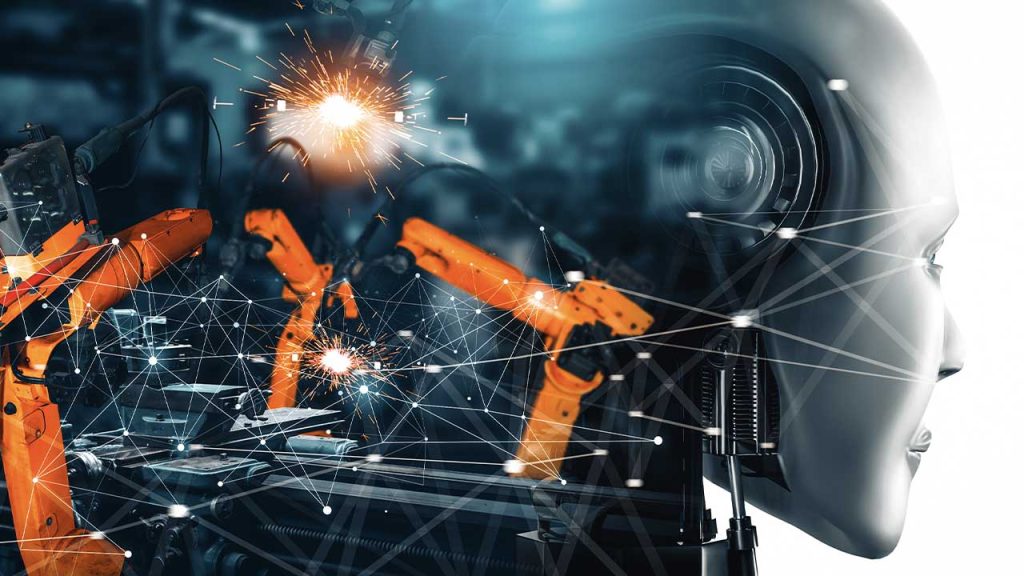Four steps to make your maintenance program ready for the IIoT
IIot can reduce maintenance cost, increase asset availability, improve customer satisfaction, generate new service revenue. These are just a few of the benefits that many companies are hoping to get out from the Industrial Industrial Internet of Things (IoT). Find out what you should do to make sure your maintenance program is ready for the IIoT.
Potential benefits of using the IIoT for your maintenance operation
- Interaction with production systems would preempt product losses due to equipment failure and/or unplanned maintenance downtime
- Interface with the CMMS to kick out work orders based on current conditions
- Equipment such as pumps could be programmed to switch over to back-up systems and redundancies based on conditions
- Linkage to MRO inventory to call out parts needed for condition-based maintenance requirements
- Realtime readouts via handheld devices to improve effectiveness of time spent on inspection rounds
- More detailed feedback to operators to support TPM
- Provide follow-up on maintenance activity to verify it was completed correctly and on schedule
- Accelerating defect elimination and financial gains identified from the RCM program
You’ll need to collaborate with your production, engineering, and quality cohorts to assess hardware and connectivity requirements, implementation costs and data security measures. You’ll need to address integration and communication with existing equipment (good news: you can probably use most of the of the sensors and connectivity technology that you already have in place).
If you are ready to begin planning for an IIoT connected maintenance program, here’s what to consider before diving in.
Understand What the Maintenance and IIoT Can Do, and How
Here’s an important concept: the IIoT is not so much about automated factories as it is about delivering the full range of services that the equipment in the factories was designed to provide – consistent high quality output at a predictable rate. The same can be said about Reliability Centered Maintenance (RCM) in general, and condition-based maintenance (CBM) in particular. In fact, the IIoT is a great way to accelerate the productive impact and the financial return that RCM can deliver. You might even say the IIoT enables something closer to Just In Time Maintenance because it is now more technologically and economically feasible to provide a wider range of data for CBM in real time, eliminating the wait for inspection results or worse, a call from operations about a drop in quality or output or even failure. With an IIoT-connected maintenance program, staff can be dispatched immediately, before failure occurs, in response to a sensor’s report that an asset’s condition has strayed beyond acceptable limits.
IIoT can help CBM achieve the full promise of its benefit to asset maintenance that was first recognized when it became popular in the 1980s. These include lower production cost, lower use of resources, and improved system reliability. An IIoT-connected CBM program can significantly reduce the amount of maintenance man-hours required compared to other maintenance strategies. Why? Because you only need to maintain equipment when conditions indicate it is necessary (aka Just In Time) to sustain its optimal performance.
To avoid JIT becoming JTL (just Too Late), ongoing preventive and predictive routines are still required. IIoT can help build more robust equipment histories to inform and improve PM and PdM routines. But it cannot replace basic asset healthcare.
Lead with RCM
If you want to gain an advantage in the use of IIoT for maintenance, first develop a robust RCM program. One byproduct of implementing RCM is an increased awareness of your assets’ needs – this knowledge can help you take advantage of the IIoT’s potential.
Manufacturers that do not have an RCM program will have a much longer row to hoe than those who do and are at risk of falling even further behind. Here’s why.
First, a good RCM program includes an equipment criticality assessment to establish consensus on ranking which assets are genuinely critical and to what extent by determining how the failure of an asset can impact output, utilization, quality, safety, environment, failure rate, downtime and wastage. If you want to move towards IIoT for your maintenance program but have not done a criticality assessment, start now. It will define each asset’s priority based on its criticality to the organization. A criticality assessment will also guide the placement of sensors where they will do the most good.
Second, RCM programs conduct risk analyses (RA), failure modes and effects analyses (FMEA), root cause failure analyses (RCFA) and more. These efforts yield the information needed to mitigate the risk of failure (temperature, vibration, cycle count, run time, etc.). The information will also indicate the type of sensor to install for each connected asset based on how to mitigate its specific risk of failure. This is how you will get the greatest impact out of your IIoT installation and investment – by using it to drive the effectiveness of your RCM program.
An added benefit to developing an RCM program is that you’ll also lean out your IIoT preventive and predictive maintenance (PM/PdM) procedures, eliminating non-value added tasks and boosting the return on your maintenance efforts.
Assess Where You Are (and Are Not)
As we’ve outlined above, your ability to effectively utilize the IIoT in your maintenance program will depend on how far you have evolved towards RCM. It will also depend heavily on the fundamentals of planning, scheduling, training, and good communication.
- Do you have the skilled people and/or outside resources who can work within the new IIoT paradigm’s requirements?
- Do you have a clear vision of the end state of an IIoT environment, what it will achieve and how it will be different than the present?
- Are you prepared to tailor your MRO inventory to your RCM requirements to keep your assets in service?
Walk, then Run
Where are you on the maintenance maturity scale? Have you advanced from reactive to more proactive and predictive maintenance strategies? If you are just now getting work order disciplines in place, don’t have an asset list, or have not updated your preventive maintenance procedures in a few years, adopting the IIoT will only bury you in data you can’t hope to use properly. Get a solid RCM program in place first, prove it out, then start planning for IIoT.
When building a house or coaching a football team, the house must first have a solid foundation and the team must have a firm grasp of the fundamentals before you can make good use of any enhancements. The old sage’s “Walk before you run” advice holds true for adopting the IIoT for maintenance, too.
The article was written by Steven Mueller and was originally published here.
Steven Mueller is Director of Commercial Operations for Daniel Penn Associates. He is responsible for project development, management and the delivery of results for our private sector clients. Steve has over 30 years consulting experience.



